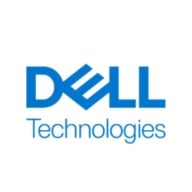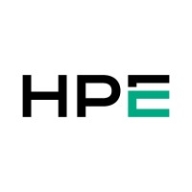

HPE BladeSystem and Dell PowerEdge MX-Series compete in the server blade market. HPE BladeSystem appears to have an edge with its compact modular design, whereas Dell PowerEdge MX-Series offers superior scalability and configuration options.
Features: HPE BladeSystem is highly configurable, reliable, and durable, with user-friendly management interfaces. It integrates management across servers, storage, and networks, ideal for virtual environments. Dell PowerEdge MX-Series focuses on performance improvements, power consumption controls, and robust management via OpenManage, with high availability and future-proofing configuration options.
Room for Improvement: HPE BladeSystem faces challenges with blade server scalability, compatibility issues, and the need for more user-friendly interfaces. The weight of the chassis and multiple management interfaces require refining. Dell PowerEdge MX-Series needs to address hardware issues like chip creep, improve VLAN configuration, expand networking options, and enhance third-party product integration.
Ease of Deployment and Customer Service: Both systems are mainly used in on-premises environments. HPE BladeSystem is appreciated for its robust technical support, with some navigation challenges through support tiers. Dell PowerEdge MX-Series offers straightforward initial setup and customer service, with critiques on timely responses and handling complex inquiries.
Pricing and ROI: HPE BladeSystem is seen as expensive but provides significant ROI through long-term savings and reduced ownership costs. It's valued for extending hardware life beyond typical cycles. Dell PowerEdge MX-Series, similarly priced, ensures strong ROI via power efficiency and operational savings. Initial high prices often decrease after negotiations, providing economic benefits.
We utilize AI technology with Dell PowerEdge M through a module known as CloudIQ, which provides automation and takes care of predictive analysis and reporting.
They provide excellent help when needed.
Regarding technical support from Dell, I find them to be one of the best support providers in the industry right now.
I would rate technical support from HPE as an eight on a scale from one to ten.
Regarding scalability, I can scale up to 64 enclosures, and each enclosure can hold around 7 blades.
I encounter challenges in identifying reasonable prices during the setup cost and licensing process, especially for scalability when we need to contact different vendors for quotes to find competitive offers.
I do not have to call HP support frequently, which indicates its reliability.
There are differences in security configurations, particularly in SNMP and SNMP3, between HP ILO and iDRAC.
In terms of potential room for improvement regarding Dell PowerEdge M, I would want to see something such as dense nodes and additional storage, as well as multiple network connectivity on the blades.
To do any customization, we need to contact HP technical support, and the process is not user-friendly.
In general, there is a 10% to 15% price gap compared to competitors.
Sometimes Dell may be a little costlier, but that is considering the services and solutions we are providing, which can be adjustable.
With around 19 years of exposure in working with various servers, including HPE, I encounter challenges in identifying reasonable prices during the setup cost and licensing process, especially for scalability when we need to contact different vendors for quotes to find competitive offers.
In general, there is a 10% to 15% price gap compared to competitors.
The ease of troubleshooting and managing through remote access, using tools like iDRAC, significantly saves me time.
If the customer is changing their network infrastructure from 1GB or 10GB to 25GB or 400GB, the MX7000 fabric switch can support that.
The integration of storage and networking components within the HPE BladeSystem is quite beneficial as it is easily interoperable if we are using the same system for monitoring with the same software, which eliminates interoperability issues.
The feature I find most valuable is the ease of use.
| Product | Market Share (%) |
|---|---|
| Dell PowerEdge MX- Series | 14.7% |
| HPE BladeSystem | 13.7% |
| Other | 71.6% |


| Company Size | Count |
|---|---|
| Small Business | 12 |
| Midsize Enterprise | 3 |
| Large Enterprise | 10 |
| Company Size | Count |
|---|---|
| Small Business | 29 |
| Midsize Enterprise | 40 |
| Large Enterprise | 103 |
Dell PowerEdge MX-Series servers excel in high-density, high-performance computing, ideal for modular environments requiring efficient rack-scale solutions. They optimize space, power, and cooling while offering scalable architecture for diverse, demanding workloads.
PowerEdge MX-Series offers unmatched efficiency in high-performance computing infrastructures, leveraging a disaggregated architecture in the IR7000 rack. This approach separates power and cooling from nodes, enhancing flexibility and serviceability for AI, HPC, and large-scale virtualization. Featuring the latest processors and advanced interconnects, it supports robust scalability and superior performance, driving businesses to modernize their infrastructure confidently.
What are the standout features?Dell PowerEdge MX-Series is extensively employed for virtualization, data center consolidation, and hyper-converged infrastructures. Widely adopted for storing virtualization on blade servers and handling compute tasks, it is a trusted foundation for diverse workloads like private clouds and scientific computing. Notably effective for data logging in solar power plants and delivering scalable infrastructure where compute and processing speed are critical, without dependence on traditional virtualization platforms.
HP ProLiant BladeSystem share power, cooling, network, and storage infrastructure via the blade enclosure. Since equipment is not needed for each server, you get a dramatic reduction in power distribution units, power cables, LAN and SAN switches, connectors, adapters, and cables. And you can add the newest-generation technologies by simply changing individual components.
We monitor all Blade Servers reviews to prevent fraudulent reviews and keep review quality high. We do not post reviews by company employees or direct competitors. We validate each review for authenticity via cross-reference with LinkedIn, and personal follow-up with the reviewer when necessary.